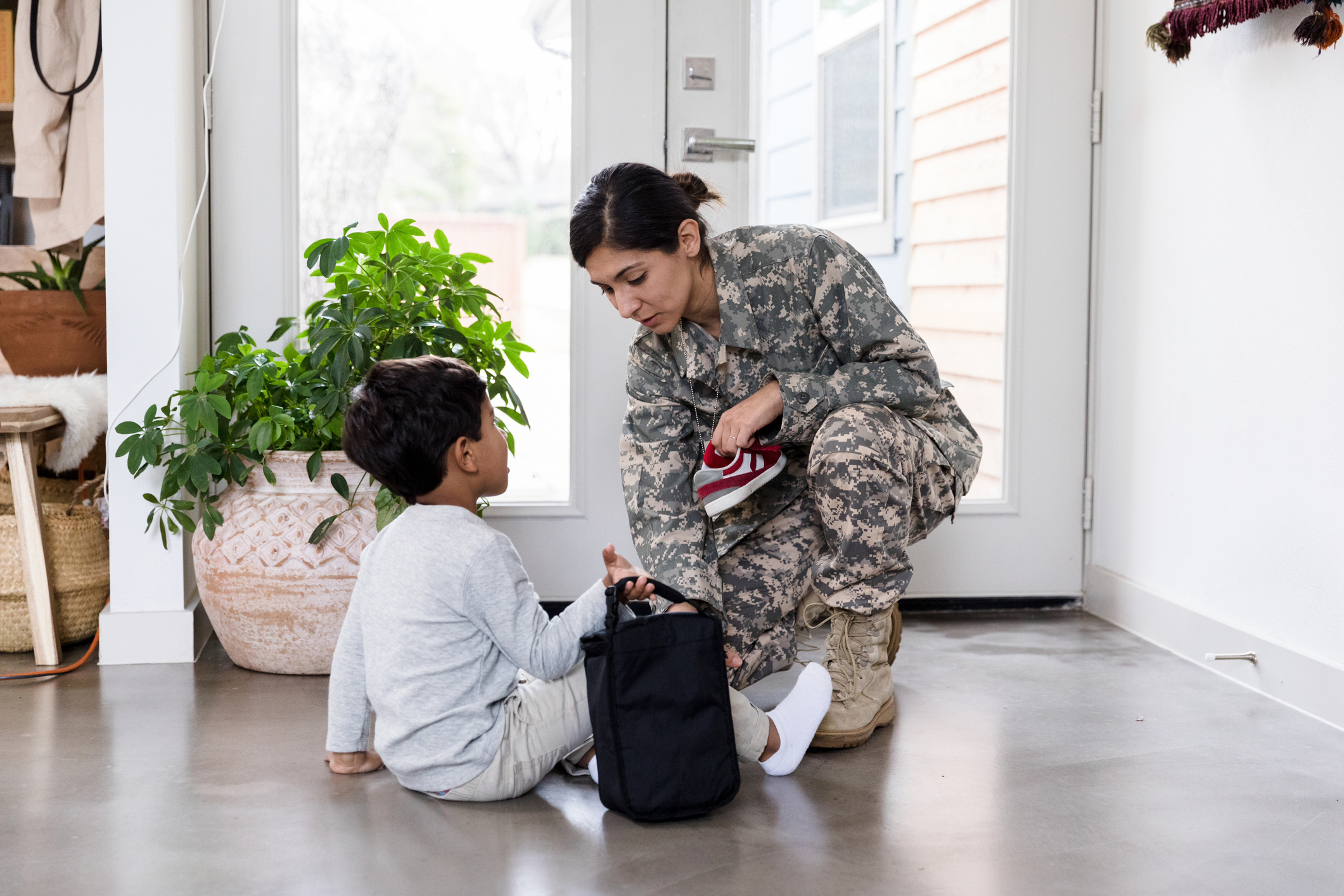By: Jenny Rea, PhD
During PCS season (May-August), many military families across the U.S. transition and settle into new homes and communities. This might also mean transitioning into a new school for some families with school-aged children.
School-to-school transitions are a normal part of any child’s educational experience. However, these transitions “can be challenging, whether they occur at developmentally appropriate times (e.g., move from elementary to secondary school) or when the student’s family relocates” (Garner & Chappel Moots, 2018, p. 1). The period surrounding a transition can bring about unique challenges (e.g., adjusting to homework expectations). “If not navigated successfully, stress stemming from relocating can put students at risk for lower academic achievement” (Garner & Chappel Moots, 2018, p. 1), and depressive symptoms, including feelings of isolation (O’Neal, Peterson, & Mancini, 2023).
Research suggests that a student’s chance of completing high school is affected by their success following a transition (Garner & Chappel Moots, 2018). For instance, successful transitions between schools predict on-time graduation for high school students and access to postsecondary training opportunities (Garner & Chappel Moots, 2018).
Studies have shown that school-to-school transition support is even more critical for students who are highly mobile. Highly mobile students are more likely to face fragmented educational experiences, resulting in gaps in curriculum or repeating content, and differences in teaching approaches from one school to the next (Garner & Chappel Moots, 2018). Highly mobile students are also more likely to experience social disruption (Garner & Chappel Moots, 2018).
The success and well-being of military-connected students depend primarily on the network of informed, supportive professionals that respond effectively to their unique challenges (Pisano, 2020). O’Neal and colleagues (2023) recently found that “regardless of school type (e.g., on or off the military installation), adolescents with higher levels of social support averaged better academic performance, more school engagement, and more homework commitment” (p. 1128).
To better support you in your work with military families, here are a few strategies for enhancing positive school outcomes for military-connected students in transition:
- Actively and intentionally engage with military-connected students and their families, such as bringing military families together to share their experiences and validation.
- Assist parents of children with disabilities by connecting them to accessible services (e.g., speech, occupational, and physical therapies, social skills groups, medical specialists, and parent training).
- Connect military families with school liaisons, school counselors, and school psychologists to help assess previous knowledge and ensure proper placement of the student in their new school.
- Connect parents and students to school resources and offer additional resources for new families, including parent engagement, as it is essential to military-connected adolescents’ overall health and well-being (O’Neal et al., 2023).
- Continue to foster ways for families to stay connected and reconnect, such as family bonding and interaction through military-focused support groups.
- Educate yourself on all potential resources in your area. Bridge the communication gap by being a “one-stop shop” for military families where they can locate and access resources all in one place.
- Foster school and community support through organized community events, youth development programs, student-led programs, or extracurriculars (e.g., sports teams, school clubs) to help students assimilate to new environments.
- Help prepare parents and teachers to be cognizant of the military student’s mental health, including how young people experience and deal with transition and loss. Teachers, in particular, are often a significant source of support for adolescents (O’Neal et al., 2023).
- Provide and engage in more training and education on the challenges and needs of military students and how to best support them. Assess their needs (e.g., a “check-in”) and then provide specific resources to support them and their families.
- Strive to communicate between disciplines. Make an effort to create an environment that leads to positive health and learning outcomes for military students amongst healthcare professionals, public school staff and administrators, educators, mental health professionals, and other community entities.
References
Garner, J. & Chappel Moots, S. (2018). Measuring well-being as students transition between schools: The validation of the Quality of Transition Instrument. The Journal of At-Risk Issues, 21(2). Retrieved from https://files.eric.ed.gov/fulltext/EJ1199050.pdf
O’Neal, C. W., Peterson, C., & Mancini, J. A. (2023). Military adolescents’ experiences of change and discontinuity: Associations with psychosocial factors and school success. Family Relations, 72(3), 1118–1137. https://doi.org/10.1111/fare.12740
Pisano, M. C. (2020). Students from military families. In Rossen, E., Supporting and Educating Traumatized Students: A Guide for School-Based Professionals (pp. 233-251). Oxford University Press. https://books.google.com/books?hl=en&lr=&id=CMXLDwAAQBAJ&oi=fnd&pg=PA233&dq=related:hHPohf9DjMMJ:scholar.google.com/&ots=fb0z_fnj2J&sig=AScfqTExpBq3R1VaFoqbdPjVeNs#v=onepage&q&f=false
Writers Biography
 Jenny Rea, Ph.D., is a military spouse and mom of four kiddos under six years. Jenny consults with OneOp and is an Assistant Professor of Practice in the Department of Human Services and Director of the Certificate in Military Families at the University of Arizona.
Jenny Rea, Ph.D., is a military spouse and mom of four kiddos under six years. Jenny consults with OneOp and is an Assistant Professor of Practice in the Department of Human Services and Director of the Certificate in Military Families at the University of Arizona.
Photo Source: IStock















